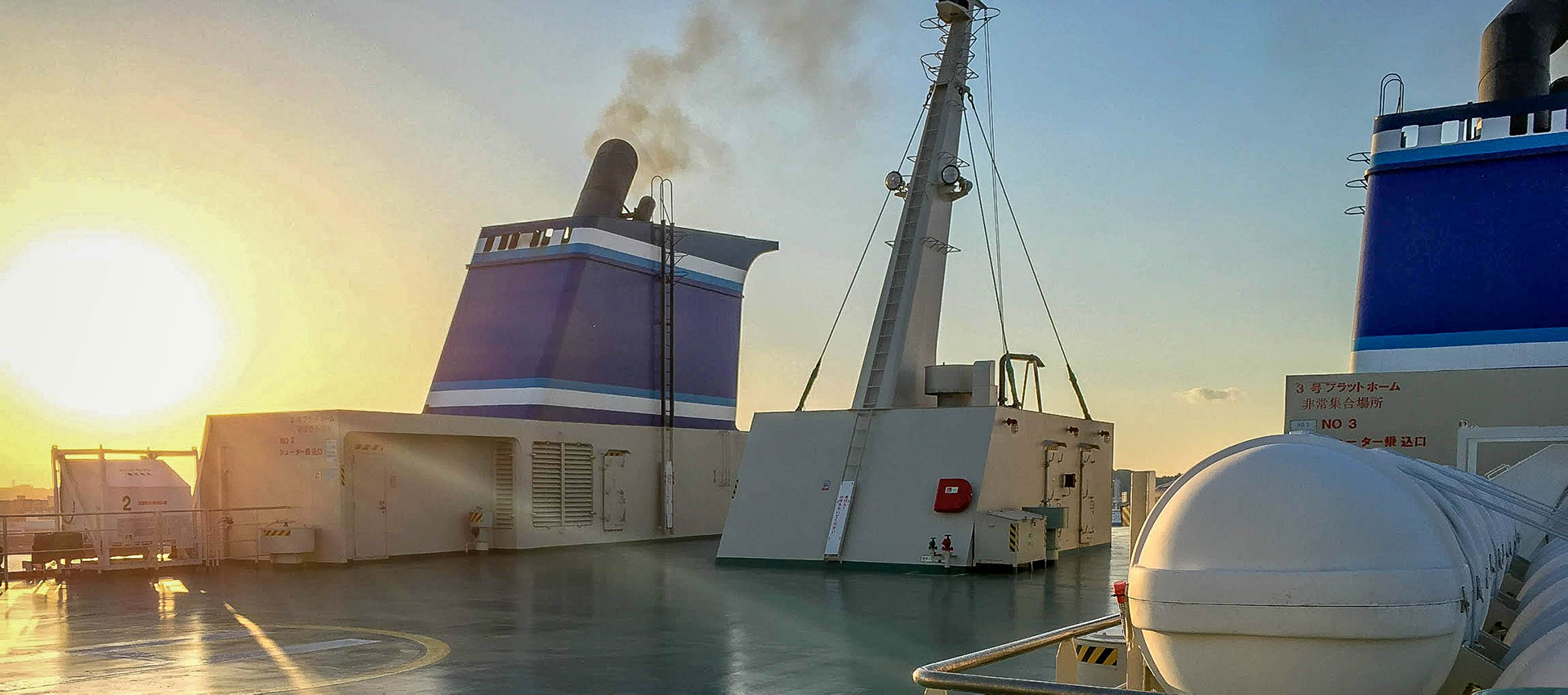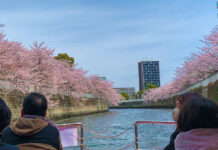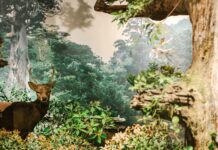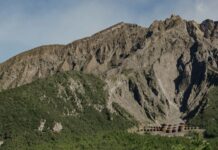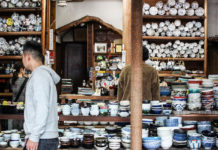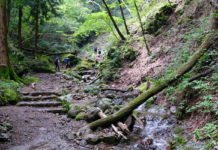This is the last day of our trip from Tokyo to Okinawa, but the journey doesn’t stop with the Okinawa ferry. To keep up with the last portion of our trip, checkout the Okinawa Without a Car series here.
The possibility of taking an airplane seemed promising. We could get to Okinawa in a couple of hours instead of a couple of days, but we were determined to stick to the plan. We would avoid airplanes until it was time to return to Tokyo, so we made our way over to the docks and got onboard the late afternoon Okinawa ferry. The prospect of a 26-hour ferry didn’t seem as enticing as it had before two weeks of travel. Slightly exhausted, we forced ourselves aboard anyway. By the next evening, we would be in Naha, but for the next day we would call the ocean home.
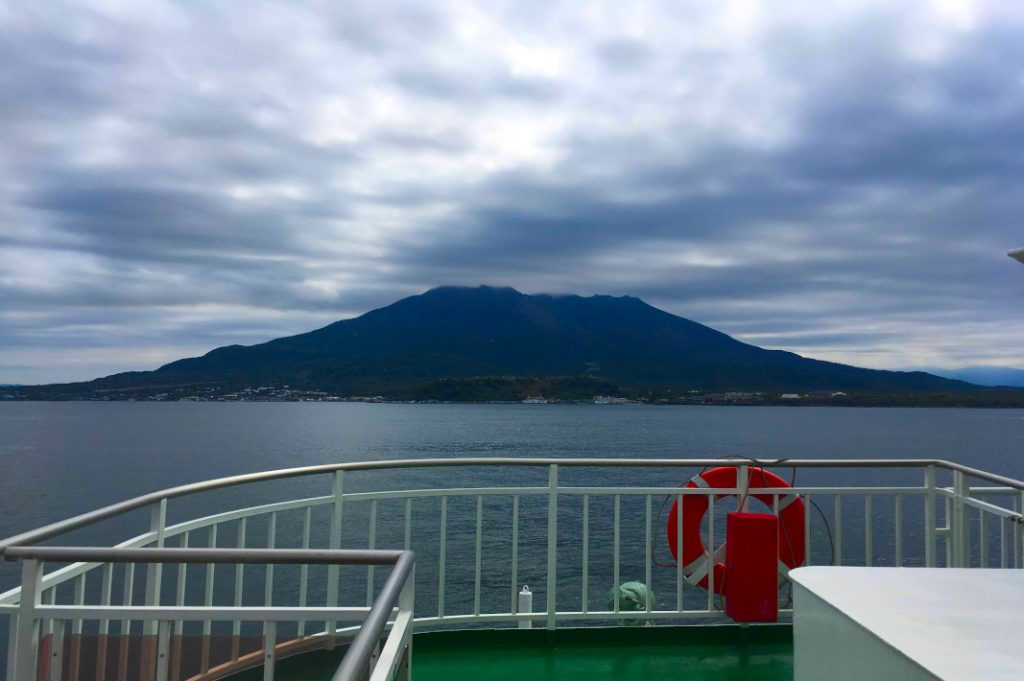
All Aboard the Marix Line
There are two ferries operating between Kagoshima and Naha (Okinawa): ‘A Line’ and the ‘Marix Line’. We had opted for the Marix Line. Stepping aboard, we were curious about how life was to precede for the next day. We had been told almost nothing in advance. We had opted for the cheapest sleeping arrangements and were directed to a large room at the very back of the boat. It looked more like an evacuation shelter than a guest room. More than 30 bedrolls were laid out side by side without so much as a hair’s breadth between them. We resigned ourselves to the possibility of a sleepless night and couldn’t help but look enviously at some of the other passengers who had opted to pay extra money for lush and fully furnished private quarters.
As we found our way to our two rolls (fortunately at the edge of an aisle, rather than in the center) an elderly couple was making themselves at home across from us. The man was sitting on the edge of my fiancé’s makeshift bed and changing his pants, seemingly oblivious to all else. As he sat there airing out his socks, my fiancée whispered that she would be back and left to find a toilet. The older man’s wife seemed to get the clue and yelled at him for being rude. The man sheepishly retreated under his blanket. After a few more minutes the foghorn let out a deep low bellow and boat headed out to sea.
Out at Sea
Up on deck, we watched the ship pull out of port. We would visit the top deck several times throughout the ferry voyage. From there you could look out at the horizon or the occasional passing island, but there was also a risk. The strong scent of diesel hung over the back, and if the wind wafted the wrong way, the only respite would be a quick sprint back inside.

Below deck there wasn’t much to do. Meals occurred on very fixed schedules and typically lasted for 20 minutes, meaning you had to be ready to pounce when the meal chime sounded. Aside from eating, we only had books to pass the time. In short, there wasn’t a lot to do, but we did find some break from the tedium with several warm baths. One of the most interesting features of the Okinawa ferry was a large Japanese style bath. After filling it up, you could sit in the warm water and let it slosh around you as you watched the world go by through a porthole.
Arriving in Okinawa
With not much else to do, we decided on an early bed around 10pm. As we lay in the cavernous floating room, the sounds of snoring and murmuring combined with the rocking of the boat and made it difficult to sleep. The woman next to me in particular spent the better part of the night hacking up a lung. And though I finally drifted off around 1, I realized I should have tried to sleep earlier. At 4 AM, the morning alarm went off. We’d reached the first of our stops.
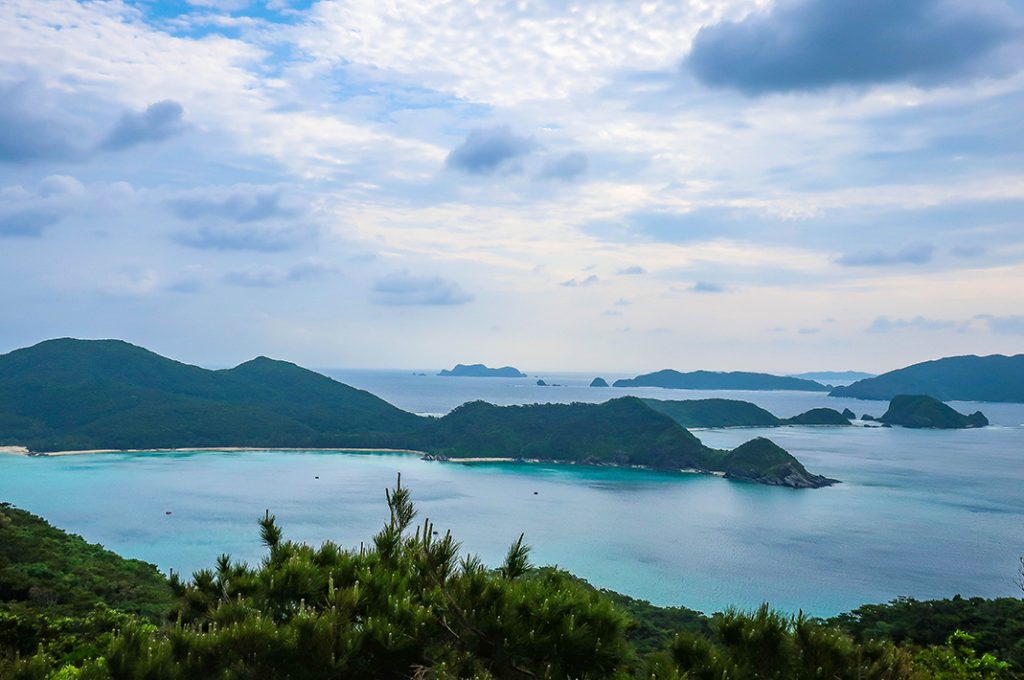
During our second day of sea travel, the ferry made several ports of call on the way down to Naha. The water became bluer, and the air warmer. We had entered the Ryukyu Island chain. At each port a few more people left until only a small group of a dozen people or so seemed to be aboard. At around 7 in the evening we ran up to the deck to see the Okinawan mainland come into view. The road (and sea) trip was finally done. After two weeks of travel we were ready for some relaxation. The Okinawa ferry hadn’t been the most comfortable way to reach Okinawa, but it had been a unique and adventurous way to end our journey through southern Japan.
Destination: Okinawa Ferry
Address: 45-1 Jyonan-cho, Kagoshima-shi, Kagoshima-ken 892-0835
URL: https://marixline.com/?lang=en
Post by Japan Journeys.



